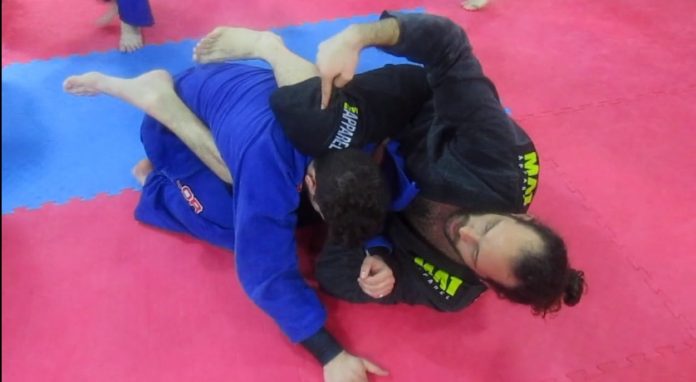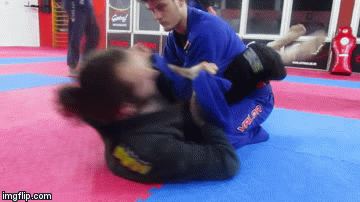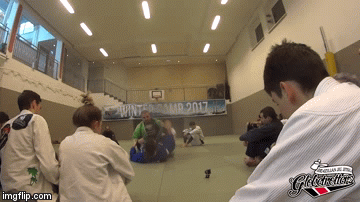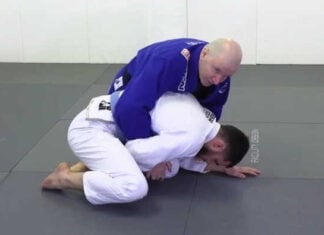
The guard is what got BJJ off the ground in the first place. Moreover, to this day, it remains the most complex part of Jiu-Jitsu, with too many variations to count. Whether it is the closed r open guard or anything in between, there’s certainly no lack of option in BJJ. However, there are certain guards that people deem to be ultra-successful. AS expected, everyone is giving them a go, which in turn, makes them easy to predict, prevent, counter and pass. So, is our approach to using the “highest percentage” guards really the right one? Because it seems that little-known BJJ guards might just turn out to be way more effective than the stuff everyone’s using. The Pocket Guard is one such guard variation.
While playing guard can be fun, playing a guard nobody expects and seeing people’s reactions is priceless. There are plenty of examples of guards that people rarely use, but at the same time, they have a really high rate of success. Most of Keenan’s guards are like this, with the exception that he centers them around his needs and more importantly, his body type. Well, among all the BJJ guards people try and put away “for rainy days” there’s one that rarely gets taken for a spin. The best part about this guard is that it requires next to no effort to play. And yet, it yields amazing results. The guard in question is the pocket guard, a closed guard variation that’s as underground as they get!

Credit Where Credit Is Due
In Brazilian Jiu-Jitsu everyone can have a contribution to the art. There are no obstacles to people inventing and trying to develop their own moves, or even entire systems and concepts. Even if they don’t work for everyone, every person that trains can contribute, regardless of the belt level. However, when a seasoned black belt ends up conjuring something seemingly out of thin air, it is almost always certain to be effective. I don’t have the exact story about the Pocket Guard. Still, I bet it is a fun one having personally met the man behind it – Chad Wright.
The Pocket Guard is one of those BJJ guards that’s going to annoy just about everyone that ends up in your closed guard. OF course, you’d expect nothing less from a man nicknamed Fat Jesus. Chad Wright is a black belt under Neil Owen. Chad originally comes from Australia, where he is the man behind Infinity Martial Arts. He is also a member of BJJ Globetrotters and loves to travel the world. During one of his travels, he ended up in the Academy where I train at, and taught there for a week. That’s where I first saw the concept of the pocket guard and I immediately thought it would come in useful one day. So, full credits in terms of the position go to Chad Wright.
That said, I also put the guard idea away, particularly as it is Gi-based one and I was all about No-Gi at the time. However, as I progressed through BJJ I came back to this guard and discovered I actually had a very powerful weapon all along. So, today I’ll try to explain it as easy as I can and leave you with a position that’s wide open for further development and experimentation.
Pocket Guard 101

The pocket guard works really simple – it is a side guard variation. In other words, you go for an arm drag. Once you get one, do not proceed to the back, but rather stay in guard. At all times the elbow of the arm you are dragging stays really close to your hip, like being in your pocket. That’s the gist of it. In terms of getting more and more control over the arm in question, you have several options. You can go like an arm drag, and figure out how to keep someone there if you can.
One of Chad’s variations is to grab the lapel on the same side and use it as a wedge behind the elbow. This makes for an extremely tight control position. One variation that appeared during training is actually going for an “inside pocket”. This means making a small “pouch” right beneath the elbow crease and getting a grip there. It is notoriously hard to break and very easy to keep a hold of!
Position-wise, once you have the nearside arm in your pocket, you use your free arm to grip the Gi in the armpit area on the other side. Moreover, your top leg goes up and you use your knee to put pressure on their shoulder, so that they can’t regain posture. Now, you can go to work.
The Power Of Unknown BJJ Guards
The main power of the closed guard comes from breaking the posture. Once you have posture, though, you need to keep it. So, any guard variation that does this, from the Rubber guard to the Pocket guard will have a high degree of success. From this guard in particular, once you’re on the side, your options are plentiful. Of course, you can always g for a back take, but you can also hunt for wristlocks on the trapped arm or sweep with ease. There’s also a wicked bent armlock right from the spot along with a straight armlock on the far arm.

One issue is learning them correctly. Unless you have access to the “founders” or great video material on the subject, you’ll need to experiment for yourself. The advantage here is that you can make the position your own, and make it fit your game. Another drawback of this particular guard is that it is a Gi-only guard, given the heavy involvement of Gi and/or lapel grips. It is, however, an awesome thing to do from the bottom. Especially when you do not want to bother about keeping someone’s posture broken.
Conclusion
Get out of your comfort zone. Try something new, have fun with all the BJ Jgaurd s that are available. Next time you end up in the closed guard, try going for sneakiness and surprises instead of dueling for a better position. Use the pocket guard to surprise people both when rolling and in tournaments. You’ll be amazed at how easy it becomes once you put some time into figuring out the dynamics of the position.











































